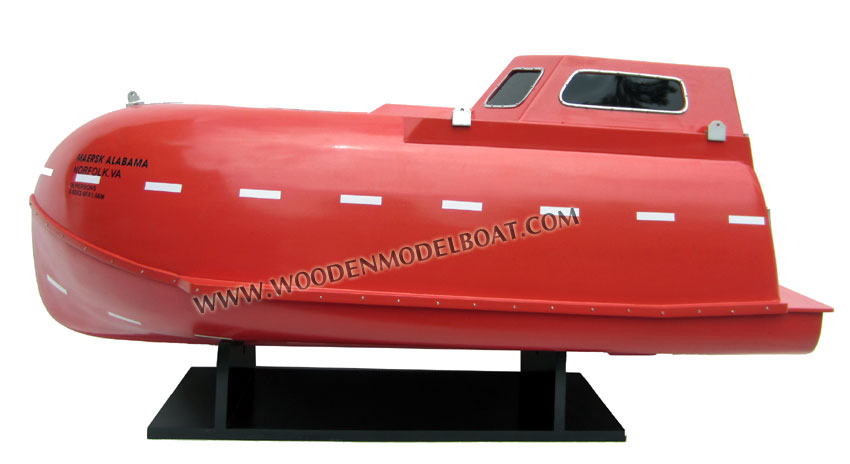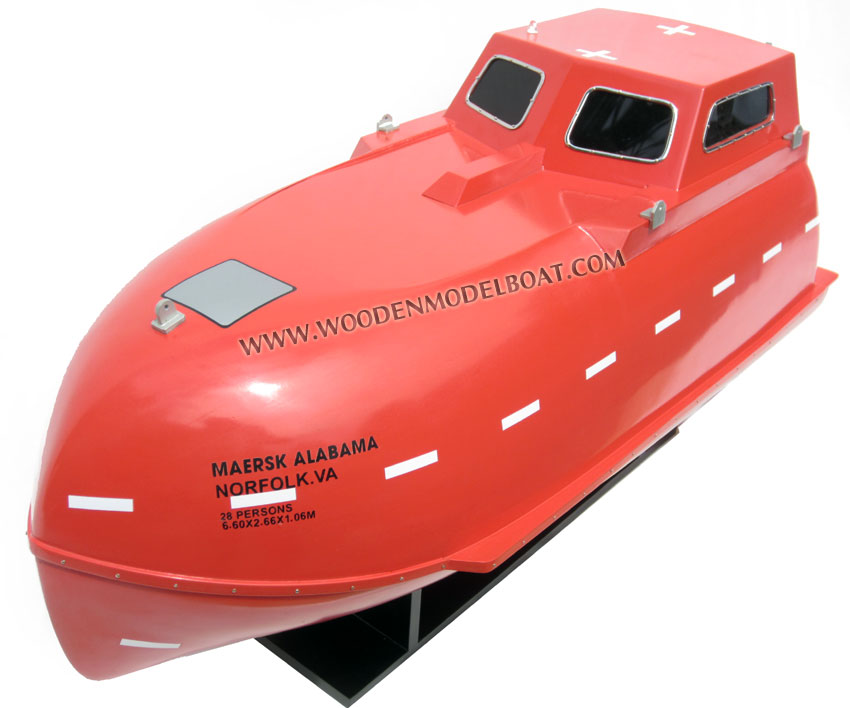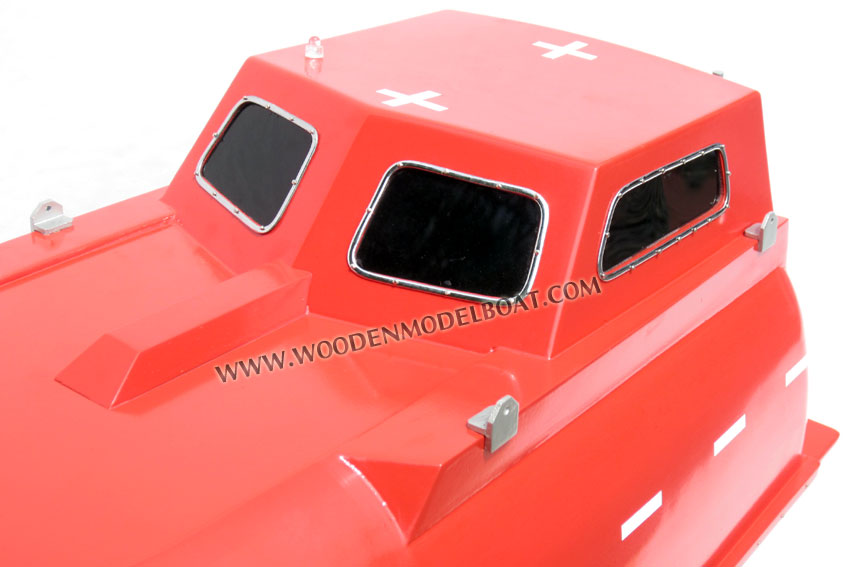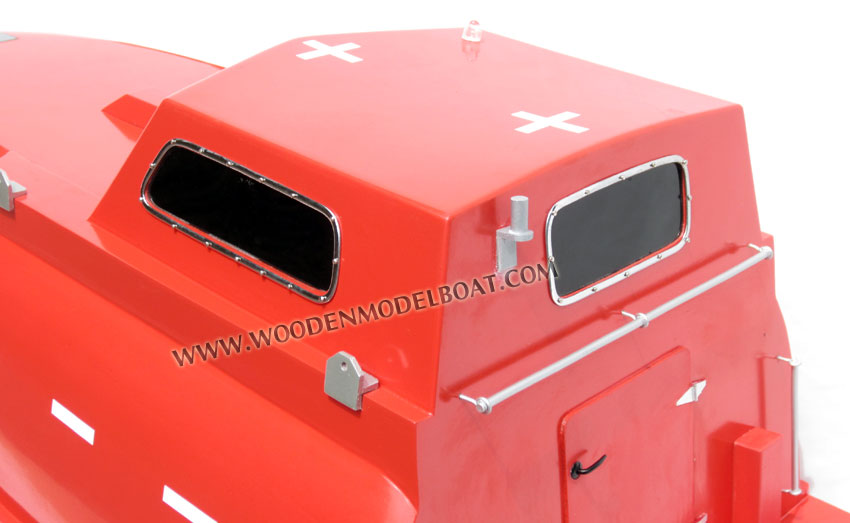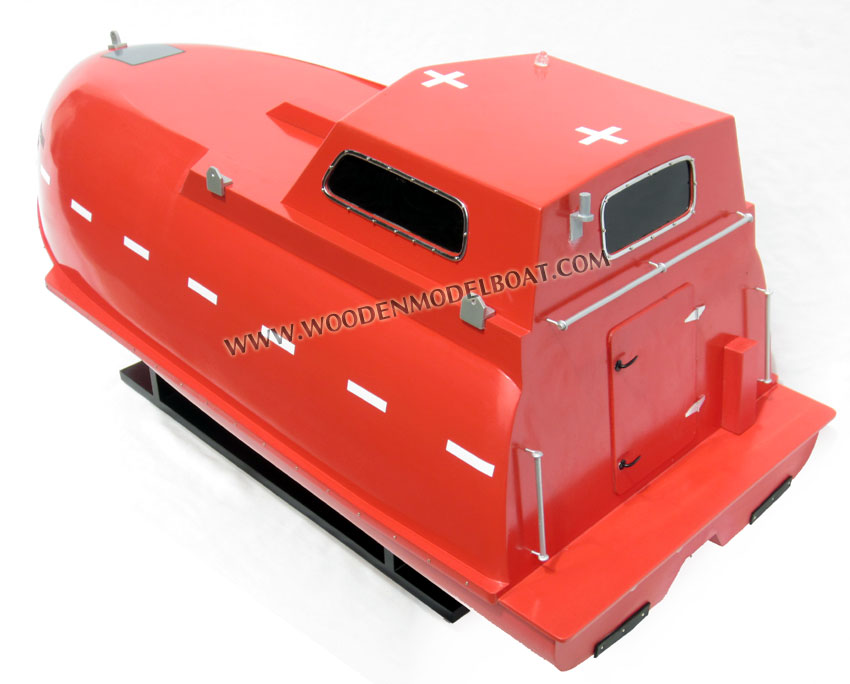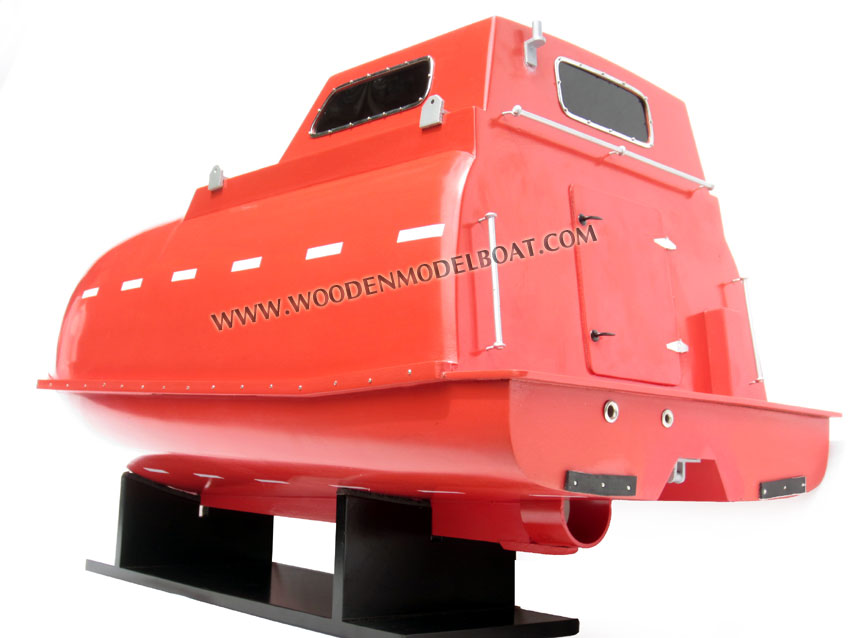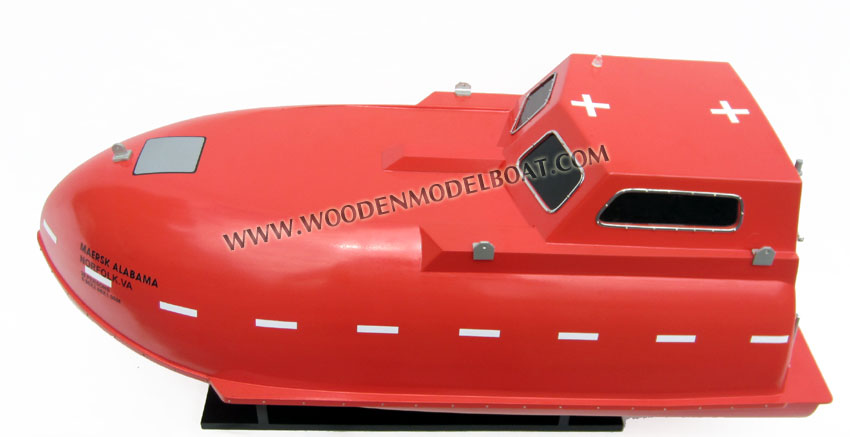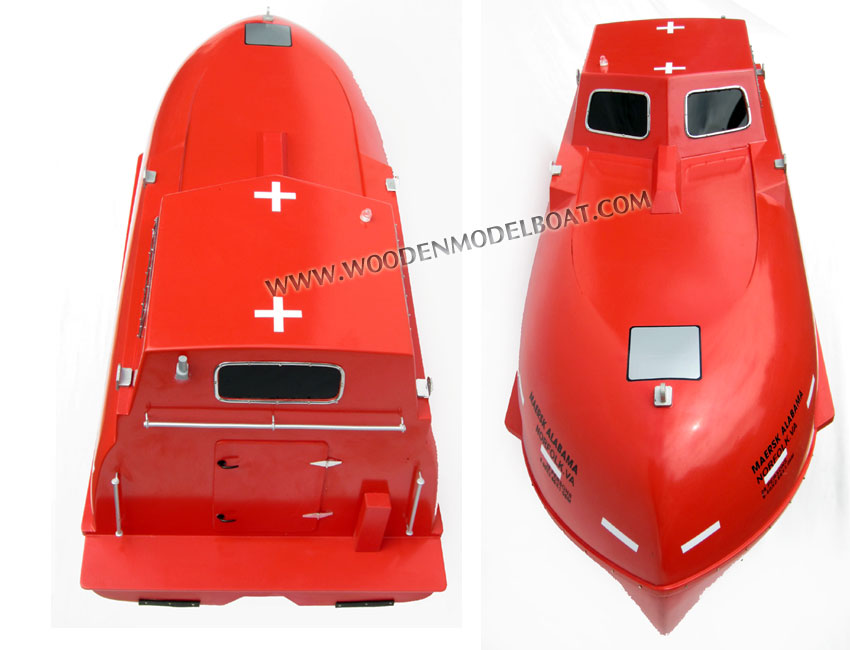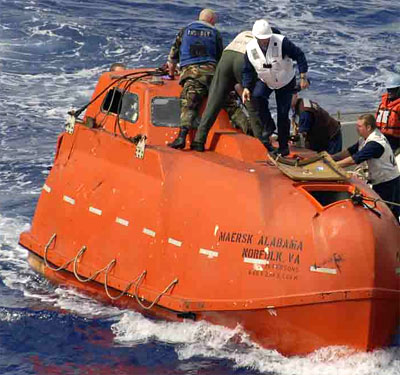| The story of the
incident was reported in the 2010 book A Captain's Duty: Somali
Pirates, Navy SEALs, and Dangerous Days at Sea by Stephan Talty
and Captain Richard Phillips, who had been master of the vessel
at the time of the incident. The hijacking also inspired the
2013 film Captain Phillips.
Hijacking
The ship, with a crew of 20, loaded with 17,000 metric tons of
cargo, was bound for Mombasa, Kenya, after a stop in Djibouti.
On 8 April 2009, four pirates based on the FV Win Far 161
attacked the ship. All four of the pirates were between 17 and
19 years old, according to U.S. Secretary of Defense Robert
Gates.
The crew members of the Maersk Alabama had received anti-piracy
training from union training schools, and had drilled aboard the
ship a day previously. Their training included the use of small
arms, anti-terror, basic safety, first aid, and other
security-related courses. When the pirate alarm sounded early on
Wednesday, 8 April, Chief Engineer Mike Perry brought 14 members
of the crew into a "secure room" that the engineers had been in
the process of fortifying for just such a purpose. As the
pirates approached, the remaining crew fired flares. In
addition, Perry and 1st A/E (Assistant Engineer) Matt Fisher
swung the ship's rudder, which swamped the pirate skiff.
Nonetheless, the ship was boarded. Perry had initially taken
main engine control away from the bridge and 1st A/E Matt Fisher
had taken control of the steering gear. Perry then shut down all
ship systems and the entire vessel "went black." The pirates
captured Captain Richard Phillips and several other crew members
minutes after boarding, but soon found that they could not
control the ship.
Perry remained outside the secure room lying in wait, knife in
hand, for a visit from the pirates who were trying to locate the
missing crew members in order to gain control of the ship and
presumably sail it to Somalia. Perry tackled the ringleader of
the pirates and took him prisoner after a cat-and-mouse chase in
a darkened engine room. The pirate ringleader, Abduwali Muse,
cut his hand badly trying to keep Perry's knife away from his
neck. The pirate was then tied up and his wounds were treated by
Second Mate Ken Quinn.
Later, after suffering in the overheated secure room for hours,
the crew attempted to exchange the pirate they had captured[11]
for the captain, but the exchange went awry and after the crew
released their captive, the pirates refused to honor the
agreement. Captain Phillips escorted the pirates to a lifeboat
to show them how to operate it, but then the pirates fled with
the Captain.
On 8 April 2009, the destroyer USS Bainbridge and the USS
Halyburton (FFG-40) were dispatched to the Gulf of Aden in
response to the hostage situation. The ships reached the Maersk
Alabama early on 9 April.
The Maersk Alabama was then escorted from the scene to its
original destination of Mombasa where Captain Larry D. Aasheim
retook command of the ship. Phillips had relieved Aasheim nine
days earlier. CNN and Fox News quoted sources stating that the
pirates' strategy was to await the arrival of additional
hijacked vessels carrying more pirates and additional hostages
to use as human shields
Rescue
A stand-off ensued between the USS Bainbridge, the frigate USS
Halyburton, and the pirates' lifeboat from the Maersk Alabama
from 9 April 2009, where they held Captain Richard Phillips
hostage. The lifeboat itself was covered and contained plenty of
food and water but lacked basic comforts, including a toilet or
ventilation.[18] The Bainbridge was equipped with a ScanEagle
drone and Rigid-hulled inflatable boats. The Halyburton held two
SH-60B helicopters on board. Both vessels stayed several hundred
yards away, out of the pirates' range of fire. A P-3 Orion
surveillance aircraft secured aerial footage and reconnaissance.
Radio communication between the two ships was established. Four
foreign vessels held by pirates headed towards the scene. A
total of 54 hostages were on two of the ships, citizens of
China, Germany, Russia, the Philippines, Tuvalu, Indonesia, and
Taiwan.
On 10 April 2009, Phillips attempted to escape from the lifeboat
but was recaptured after the captors fired shots. The pirates
then threw a phone and a two-way radio dropped to them by the
U.S. Navy into the ocean, fearing the Americans were somehow
using the equipment to give instructions to the captain. The
U.S. dispatched another warship, amphibious assault ship USS
Boxer, to the site off the Horn of Africa. The pirates' strategy
was to link up with their comrades, who were holding various
other hostages, and to get Phillips to Somalia where they could
hide him and make a rescue more difficult for the Americans.
Anchoring near shore would allow them to land quickly if
attacked. Negotiations were ongoing between the pirates and the
captain of the Bainbridge and FBI hostage negotiators. The
captors were also communicating with other pirate vessels by
satellite phone.
However, negotiations broke down hours after the pirates fired
on the Halyburton not long after sunrise on Saturday, 11 April
2009. The American frigate did not return fire and "did not want
to escalate the situation". No crew members of the Halyburton
were injured from the gunfire, as the shots were fired
haphazardly by a pirate from the front hatch of the lifeboat.
"We are safe and we are not afraid of the Americans. We will
defend ourselves if attacked", one of the pirates told Reuters
by satellite phone. Phillips' family had gathered at his
farmhouse in Vermont awaiting a resolution to the situation.
Captain Phillips (right) with Commander Frank Castellano of the
USS Bainbridge after being rescued.
On Saturday, 11 April 2009, the Maersk Alabama arrived in the
port of Mombasa, Kenya, under U.S. military escort. An 18-man
security team was on board. The FBI then secured the ship as a
crime scene.
Commander Frank Castellano, the commanding officer of the
Bainbridge, stated that as the winds picked up, tensions rose
among the pirates and "we calmed them" and persuaded the pirates
to be towed by the destroyer.
On Sunday, April 12, U.S. Navy SEAL marksmen opened fire and
killed the three pirates on the lifeboat. Phillips was rescued
uninjured. Commander Castellano, with prior authorization from
higher authority, ordered the action after determining Phillips'
life was in immediate danger, citing reports that a pirate was
pointing an AK-47 rifle at Phillips' back.Navy SEAL snipers,
from "SEAL Team Six", opened fire nearly simultaneously from
Bainbridge's fantail, killing the three pirates with bullets to
the head. The SEALs had arrived Friday afternoon after being
parachuted into the water near the Halyburton, which later
joined with the Bainbridge. At the time, the Bainbridge had the
lifeboat under tow, approximately 25 to 30 yards astern. One of
the pirates killed was Ali Aden Elmi, the last name of another
was Hamac, and the third has not been identified in
English-language press reports. A fourth pirate, Abduwali Muse,
aboard the Bainbridge and negotiating for Phillips' release
while being treated for an injury sustained in the takeover of
Maersk Alabama, remained in custody.
The bodies of the three dead pirates were turned over by the
U.S. Navy to unidentified recipients in Somalia in the last week
of April 2009.
UDT-SEAL Museum
The owners of U.S. Maersk Alabama donated the bullet-marked
5-ton fiberglass lifeboat upon which the pirates held Captain
Phillips hostage to the National Navy UDT-SEAL Museum in Fort
Pierce, Florida, in August 2009. The lifeboat had
recently been on loan to National Geographic for its "Real
Pirates" exhibition at the Nauticus marine science museum in
Norfolk, Virginia. The producers of the Captain Phillips film
visited the Museum in the process of re-creating the lifeboat
and interiors for the set. An example of the Boeing Insitu
ScanEagle used to monitor the crisis is also on display, as is
the Mark 11 Mod 0 (SR-25) sniper rifle of the type used by the
U.S. Navy SEALS to kill the pirates and free Phillips. |

